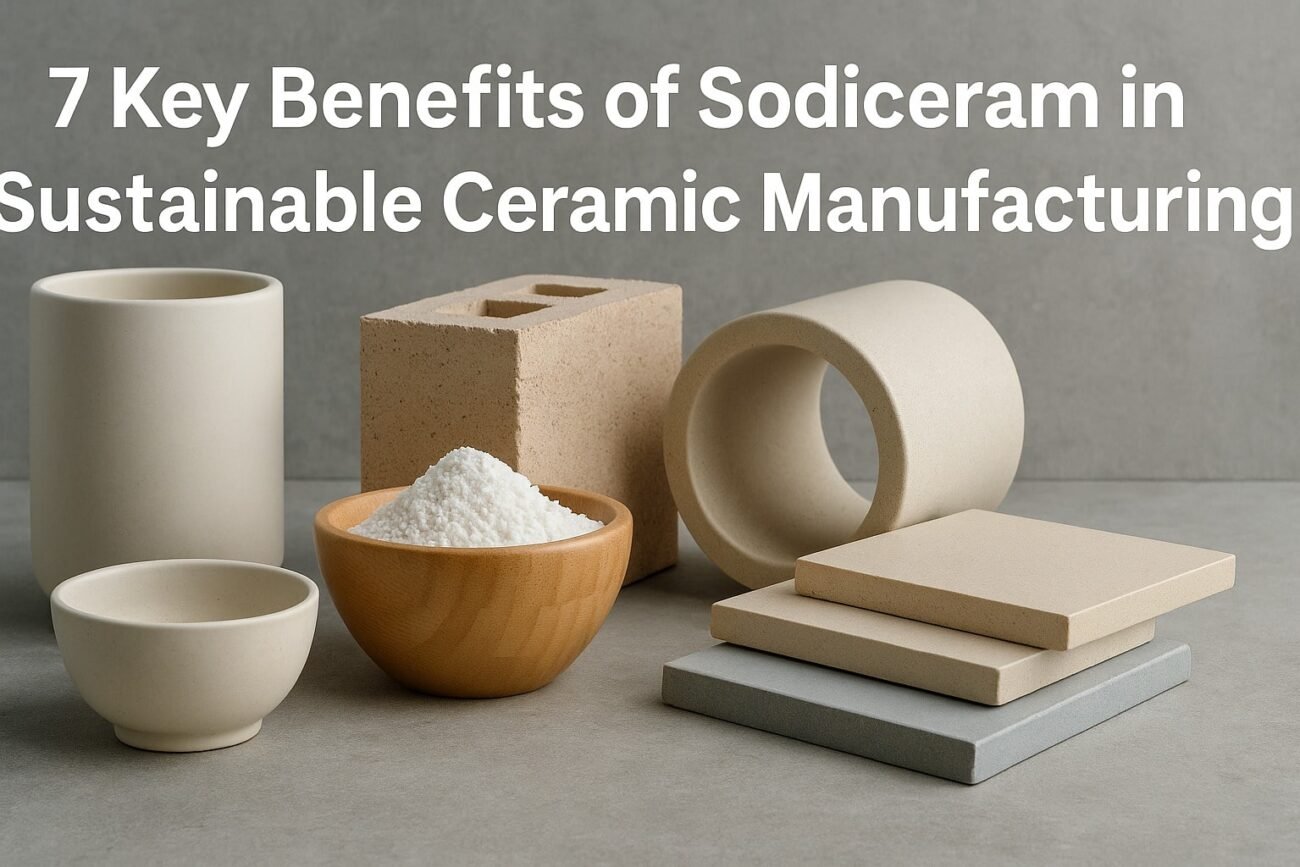In a world urgently seeking cleaner, more efficient technologies, Sodiceram has emerged as a game-changing innovation in the field of ceramic materials. Blending performance, sustainability, and scientific advancement, Sodiceram is not just another product—it’s a shift in how ceramics are designed, manufactured, and applied across industries.
Whether you’re in architecture, industrial manufacturing, or materials science, understanding Sodiceram could help you stay ahead of the curve in sustainable innovation.
What Is Sodiceram?
Sodiceram is a next-generation ceramic material that integrates sodium-based compounds into the ceramic formulation. This sodium-enhanced matrix offers several advantages over conventional ceramic processes, most notably by reducing firing temperatures and improving energy efficiency without sacrificing strength or durability.
In simple terms, Sodiceram uses sodium (Na) as a fluxing agent—a substance that helps lower the melting point of materials. This results in:
- Less energy use during production
- Lower emissions
- Improved mechanical performance
- Reduced material waste
These features make it highly attractive in industries where ceramics play a critical role—such as construction, healthcare, electronics, and advanced manufacturing.
How Does Sodiceram Work?
The innovation behind Sodiceram lies in its chemical engineering. By integrating sodium silicate or sodium carbonate compounds during the ceramic mixing stage, manufacturers can:
- Lower the sintering temperature (the point where ceramic particles bond)
- Enhance thermal shock resistance
- Improve surface finish and dimensional precision
- Speed up production cycles
In traditional ceramics, high kiln temperatures are a major source of carbon emissions. Sodiceram’s reduced firing requirements can cut energy consumption by up to 50%, significantly lowering the environmental impact of ceramic production.
Why Sodiceram Matters In Sustainability
With global industries increasingly focused on net-zero goals, sustainable materials like Sodiceram are more important than ever. This sodium-based ceramic innovation supports sustainability in multiple ways:
Lower Carbon Emissions
By reducing kiln temperatures by several hundred degrees Celsius, Sodiceram helps manufacturers dramatically cut CO₂, SO₂, and NOx emissions.
Efficient Resource Use
Sodiceram requires less water, fewer additives, and generates up to 40% less production waste, thanks to better formability and fewer rejections.
Recyclability
Finished Sodiceram products can be crushed and reused, contributing to a circular economy model rather than ending up in landfills.
Applications Of Sodiceram Across Industries
Sodiceram is more than a laboratory concept—it’s already being integrated into real-world applications:
Architecture And Construction
Eco-tiles, façade panels, thermal cladding, and structural components are benefiting from Sodiceram’s thermal insulation and strength.
Medical And Bioceramics
Biocompatible versions of Sodiceram are used in:
- Dental prosthetics
- Bone graft substitutes
- Surgical implants
Consumer Products And Art
Artists and designers value Sodiceram for its faster curing time, smoother finishes, and environmentally conscious footprint.
High-Tech Industries
Advanced research is exploring Sodiceram in electronics, aerospace components, and smart surfaces due to its insulating and shock-resistant properties.
Economic & Environmental Advantages
| Feature | Traditional Ceramics | Sodiceram |
| Firing Temperature | 1200–1400°C | 800–1000°C |
| Energy Consumption | High | Up to 50% lower |
| Production Waste | Moderate to high | Up to 40% less |
| Recyclability | Limited | High |
| Emissions (CO₂, SO₂) | Significant | Greatly reduced |
| Cost of Production | Higher | 15–25% savings |
These numbers make Sodiceram not only an environmentally responsible choice but also a cost-effective one for long-term use.
Challenges And Considerations
Despite its promise, Sodiceram is still gaining traction and has some limitations:
- Scaling Up: Retrofitting traditional ceramic kilns and processes can be costly for older manufacturers.
- Technical Training: Requires updated knowledge for technicians and engineers.
- Performance Boundaries: In extreme-use cases (e.g. aerospace heat shielding), further research is ongoing.
That said, many of these barriers are being addressed as adoption increases and newer manufacturing hubs embrace eco-smart technologies.
The Future Of Sodiceram
Looking ahead, Sodiceram is poised to play a significant role in next-gen ceramics:
- Smart Ceramics: Integration with sensors and coatings that react to temperature, pressure, or pollution.
- Eco-Certified Materials: Alignment with green building standards like LEED and BREEAM.
- Developing Markets: Countries with abundant sodium resources (e.g. India, Chile, Morocco) are becoming global suppliers.
As material science evolves, Sodiceram represents a meaningful step toward sustainability without compromise on performance.
Conclusion
Sodiceram is a breakthrough material that aligns with today’s sustainability goals while delivering performance that meets industrial standards. By reducing energy consumption, enhancing recyclability, and supporting innovative applications, it offers a forward-looking alternative to conventional ceramics.
In a time where industries are held to higher environmental standards, materials like Sodiceram are not just helpful—they’re essential.
FAQ’s:
Is Sodiceram A Brand Or A Material Type?
Sodiceram is not a specific brand; it’s a material innovation category based on sodium-enhanced ceramic technology.
What Makes Sodiceram More Sustainable Than Traditional Ceramics?
It lowers kiln temperatures, reduces emissions, and minimizes resource use, all of which contribute to a smaller environmental footprint.
Can Sodiceram Products Be Recycled?
Yes. Sodiceram-based materials can be crushed and reused, supporting a circular production model.
Is It Already Used In Commercial Products?
Yes. Applications include architectural tiles, medical implants, and artisan ceramics.
Where Is Sodiceram Being Produced?
Manufacturing and R&D are expanding in Europe, South America, and Asia, particularly in regions with sodium-rich natural resources.
Hungry for more? Head over to my website for fresh articles.
7 Ways Pigeimmo Is Transforming Urban Living With Smart Green Design
